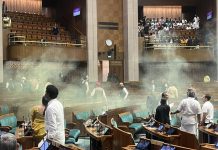 The tourism industry in India is hoping to get a major boost in the upcoming budget, expecting a spur in investment
The tourism industry in India is hoping to get a major boost in the upcoming budget, expecting a spur in investment
and employment for this sector. The tax slabs carved out under the new GST regime need a revision and many
issues like incentives for investment in hospitality and tourism and improvement of infrastructure are expected to be addressed by the Finance Minister.
The players in hospitality sector suffered a dent during the post-demonetization period. Every year has its own challenges but last year (year ending 2016) the industry’s sentiments were at their ebb.
Things have streamlined one year after the currency shake-up but worries of the hospitality and tourism sector are far from over. The rollout of GST regime has not gone down well with the industry. Multiple rates of taxation, lack of
clarity about new taxation slabs and a very high tax rate for luxury hotels may dissuade travellers from choosing their favourite destinations or resorts.
The Federation of Hotels and Restaurants Association of India (FHRAI) has requested the GST Council that to compete with neighbouring countries and to make India as a preferred tourism destination. They have sought that the GST quantum of 28 per cent for hotels be removed and GST be charged on the transaction value instead of declared tariff. FHRAI has also requested the Government to consider the fact that standalone restaurants especially those located in commercial markets and malls pay a large sum as rent for the premises; 18 per cent GST is charged on rental services. However, GST rate of 5 per cent is applicable on their output services without granting any tax credit. “Non-grant of credit on input services like rent is causing hardship to the business and increasing the cost,” said Girish Oberoi, President of FHRAI.
Prominent players in hospitality sector want ‘one industry one tax’ concept to make it more business friendly. About 30-35 per cent hotels in north region fall in the category of Luxury Hotels. It is indeed a tightrope walk for them.
Sources at a leading luxury hotel chain of India operating in Kashmir confirmed that even premium customers do not want to shell out so much on account of tax. They are expecting another year of lukewarm business.
The organised hospitality players also feel threatened by the mushrooming of bed and breakfast providers. While the GST has made the going tough for hotels, their competitors offering bed and breakfast have become more attractive and economically viable for tourists. Though the entities providing bed and breakfast fall in the ambit of GST, the tariff they charge is low. “A commercial establishment has to seek at least 20 odd approvals and No-Objection Certificates from different government authorities but bed and breakfast providers are exempted from all these approvals that saves so much of time and money,” said Sanjay Sood, President of Hotel and Restaurant Association of North India. Sood expects better business this time in comparison to last year as is indicated by the advance
reservations this season but the rationalization of different slabs of GST is imperative to keep the momentum going.
Ajay Bakaya, Executive Director, Sarovar Hotels and Resorts is sanguine over 8 per cent growth in revenue during April-December 2017. The rising aspirations of domestic travellers have helped maintain buoyancy in the occupancy rates but he too supports the need to amend the GST into simpler taxation and merge different slabs into one.
The GST of 5 per cent on restaurants has come as a big relief for the Food and Beverages sector.
Hotel associations across India have given representations to the Finance Ministry to put a uniform tax rate of 12 per cent of GST. The hotel industry, as per a report by KPMG, contributes towards 7.5 per cent of Gross Domestic Product of the country and has a projected growth rate of about 16.1 per cent of CAGR. According to sources, the government is likely to further simplify and rationalise the GST rate for the hospitality sector considering its multiplier effect on economic growth.
However, there is also a positive side to the implementation of GST. Yatish Sood of Chalets Luxury Resorts at Naldehra near Shimla is gearing up for better footfall this year. The GST provides the avenue of input tax credit which is a huge relief. Corporate travellers can also reap the benefit of input tax credit and the tourists get rid of multiple taxes like luxury tax, value added tax, service tax, etc.
During the peak season, there is dearth of rooms in tourist destinations. According to data provided by the Hotel and Restaurant Association of North India, the number of rooms in the organised sector in the states of Himachal Pradesh, Jammu and Kashmir and Uttarakhand are 8,672. The number can be higher as there is a large number of hotels in the unorganised sector too.
The ministries of tourism at the state level should act more pro-actively to organise and improve bottlenecks that impede the growth of tourism in the country. The development of new tourist destinations can help de-congest the existing spots which have now become over-crowded. Massive traffic jams in hill stations turn a holiday into an ordeal and this causes inconvenience not only for the revellers but irreparable damage to the environment.
The intervention of the National Green Tribunal on the regulation of traffic on the Manali-Rohtang road has helped to conserve the environment and natural beauty of the region but the state governments need to take steps in advance to protect the environment and offer alternatives to tourists.
The hospitality and tourism industry is India is expected to grow to USD 280.5 billion by the year 2026. On the flip side, the tax rates on hotels in other Asian Countries such as Singapore, Malaysia and Thailand are in the range of 7-8 per cent. The Indian hotel industry with the existing tax rates has a long way to go to match steps with its global peers.
letters@tehelka.com












